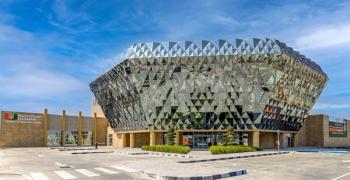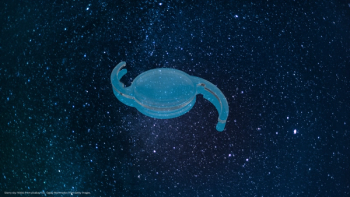
Treatment reduces giant cells
A retrospective study analysed potential associations with giant cell formation in eyes with models of the flexible iris-fixated phakic IOL implanted.
"Based on the findings from this analysis, we believe intraoperative subconjunctival corticosteroid injection using methylprednisolone 1 mL combined with a 6-week course of topical corticosteroid therapy and careful monitoring for IOP elevation should be standard procedure for all eyes with the flexible iris-fixated phakic IOL implanted," said Dr Budo, associate professor of ophthalmology, University of Maastricht, the Netherlands, and in private practice, Sint-Truiden, Belgium.
Background
Dr Budo conducted the retrospective review, which included 413 eyes of 224 patients, to investigate his clinical impression that the subconjunctival corticosteroid injection had benefits for reducing the risk of giant cell formation. Of the 413 eyes studied, 360 eyes received subconjunctival methylprednisolone. All eyes had a minimum follow-up of 3 months following phakic IOL (pIOL) implantation and maximum follow-up extended to 5 years.
The patients in the study had a mean age of 34 years old. Refractive power of the implanted pIOL ranged from –2 to –14.5 D with a mean of –7.1 D. Left and right eyes and those with light and dark irides were about equally represented in the study population whereas females predominated about 2:1 over males.
A slight majority of eyes had the Artiflex II versus Artiflex I model implanted, 379 eyes had a spherical pIOL and 34 eyes had a toric pIOL and only a minority of eyes (16.7%) received intracameral cefuroxime injection at the end of the procedure.
Giant cell analysis
Analysis of giant cell appearance showed a significantly lower rate in the methylprednisolone-treated eyes compared with the untreated control group, 9% versus 17%, respectively. Although resolution of the deposits occurred in all eyes, the duration of persistence of the giant cells was also significantly shorter in eyes that had received the subconjunctival corticosteroid injection compared with the controls.
In addition, treatment with the intraoperative corticosteroid injection was associated with a significantly lower rate of reappearance of giant cells. There were no cases of reappearance in eyes that had received intraoperative corticosteroid injection whereas giant cells reappeared after resolution in about 25% of eyes that were not treated with the subconjunctival methylprednisolone injection, representing 4% of the untreated population.
IOP variation during follow-up was similar in the two study groups. Although elevated IOP developed in three eyes treated with subconjunctival corticosteroid injection, all of these cases were well-controlled with temporary topical therapy, Dr Budo stated.
In addition to IOP elevation, the subconjunctival injection of corticosteroid was associated with nine cases of postoperative subconjunctival haemorrhage.
Additional analyses were performed to determine if certain patient and surgery-related variables influenced the appearance of giant cells. These analyses considered patient gender, use of intracameral cefuroxime or not, eye colour, IOL model (Artiflex I or II), and IOL type (spherical or toric) and found no statistically significant associations.
Newsletter
Get the essential updates shaping the future of pharma manufacturing and compliance—subscribe today to Pharmaceutical Technology and never miss a breakthrough.













































